We all depend on our devices – for work, for school, for staying connected with friends and family, and keeping up with daily life. When the latest model of phones, laptops, tablets and other gadgets become available, we are often tempted to upgrade, even if our current device works just fine. Big companies rely on this constant cycle of consumer desire for the next best thing to drive their massive profits. But with that comes the increasing problem of electronic waste, or e-waste. When we upgrade to the latest model, what happens to the old one?
The answer is that discarded electronics end up in landfills or are shipped off to developing countries, often in spite of going through proper recycling channels. The burden of managing the environmental consequences of this waste disproportionately falls on poorer countries. Below, we discuss the devastating impacts of e-waste and the environmental crisis it has caused, and the efforts to mitigate the harmful effects.

The scale of the problem
- Only 22.3% of e-waste was documented as formally collected and properly recycled in 2022.
- More than 75% of e-waste is not properly recycled or disposed of.
- China, the US, and India produce the most e-waste.
- Estonia, Norway, and Iceland have the highest e-waste recycling rates.
- An estimated 62 million metric tonnes (68.31 million tons) of e-waste were produced globally in 2022.
- That is an increase of 82% from 2010.
- It is estimated to reach 82 million tonnes (90.42 million tons) annually by 2030.
Sources: World Health Organization, European Commission, The Roundup, Earth.org
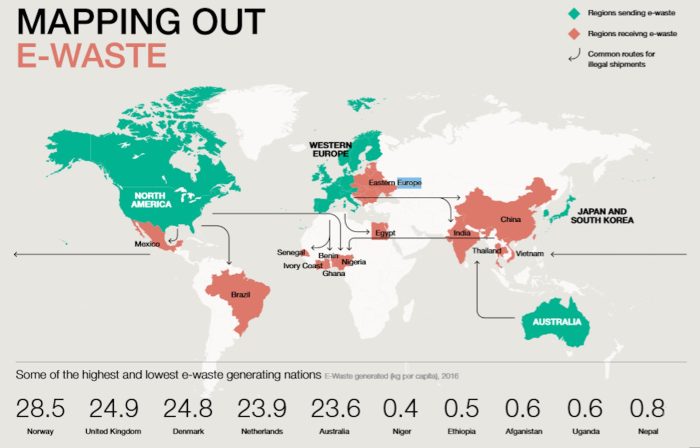
The devastating impact of e-waste
E-waste – cell phones, computers, televisions, printers, and refrigerators – contain valuable materials such as gold, silver, copper, and rare earth metals, but also toxic substances like lead, mercury, and cadmium. E-waste is considered hazardous waste, and improper disposal poses significant risks to human health and the environment.
Because so much of e-waste is not recycled through proper channels, it’s hard to keep track of where it ends up. And even when e-waste is sent for recycling, much of it is illegally dumped or traded, and processed in unsafe, unregulated conditions.
Certain regions of the world, particularly in low-income countries, bear the brunt. Developing nations such as India, China, Ghana and Nigeria are used as dumping grounds. While this may seem like a solution to rid ourselves of old gadgets, the reality is far more tragic.
Due to lack of proper infrastructure and capacity, e-waste accumulates in massive piles, polluting the land, rivers, and oceans. This threatens local ecosystems and contributes to the global climate crisis. It disrupts delicate ecological balances and destroys soil and waterways.
People, often children, work in dangerous conditions to salvage valuable metals like gold and copper. It is a dangerous and toxic process where harmful materials are handled without proper protections. The people living in these areas are exposed to a cocktail of hazardous chemicals.
Pollutants seep into the soil and water, adding to the long-term health problems. Beryllium, thallium, cadmium and arsenic, brominated flame retardants (BFRs) and polychlorinated biphenyls can lead to irreversible health effects, such as respiratory issues, cancers, miscarriages, and neurological damage. Wires and circuit boards are often burned, releasing harmful chemicals into the air.

What are the obstacles?
Many countries face challenges in collecting and recycling e-waste – and other types of waste – largely due to inadequate infrastructure. When convenient recycling drop-off points are lacking, people are far less likely to participate. Making recycling easier and more accessible is key to encouraging everyone to dispose of their electronics responsibly.
Several key obstacles hinder effective e-waste recycling in many places:
Lack of Regulatory Frameworks: Without clear laws and guidelines, there is little structure or accountability for how e-waste should be managed.
Insufficient Funding: Limited financial resources prevent the development of proper recycling infrastructure and public awareness campaigns.
Limited Producer Responsibility: Many companies fail to take full responsibility for the lifecycle of their products, particularly at the end-of-life stage.
Weak Enforcement: Even when regulations exist, enforcement is often inconsistent or ineffective, allowing informal or illegal practices to persist.
Lack of Consumer Awareness: Many consumers are unaware of the environmental impact of improper e-waste disposal, and may not be motivated to take the necessary steps to recycle their electronics responsibly.
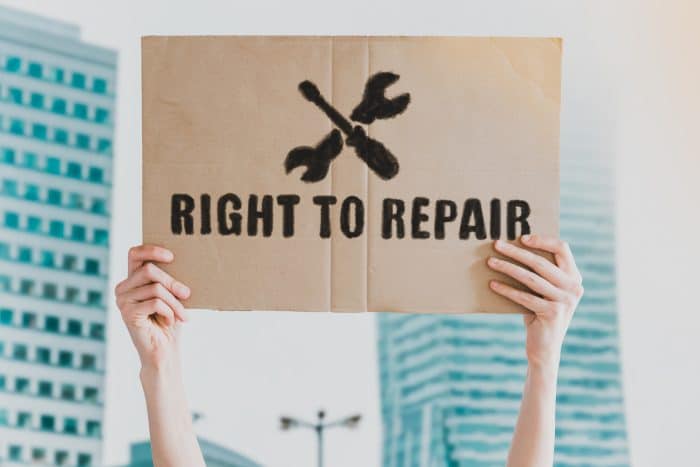
The right to repair
One of the biggest drivers of e-waste is our throwaway culture. We are encouraged to upgrade to the latest models even when the current device may still have plenty of life left in it. This trend is fueled in part by manufacturers who design products that are difficult or impossible to repair. Think about smartphones and laptops with glued-in batteries, screens that are almost impossible to replace, and proprietary screws that require special tools.
This is where the right to repair comes in. The idea is simple: consumers should be able to fix their own devices, either by repairing them themselves or taking them to independent repair shops, without voiding warranties or facing roadblocks from manufacturers.
In Europe, the Directive on the Right to Repair was enacted in 2024, and aims to promote more sustainable consumption of electronics.
In the US, there has been growing momentum for right-to-repair legislation, with several states introducing bills that would require manufacturers to provide parts, tools, and manuals to consumers and independent repair shops.

Current regulations on e-waste
There are regulations on e-waste around the world, but it’s clearly not enough. Let’s take a look at the current regulations.
- The Basel Convention is an international treaty aimed at reducing the movement of hazardous waste between countries, particularly from developed to developing nations. It includes nations from all regions of the world, including Europe, Africa, Asia, the Americas, and Oceania (the US is notably not a part).
- The European Union’s Waste Electrical and Electronic Equipment (WEEE) Directive requires producers to take responsibility for the collection, recycling, and safe disposal of e-waste. The European Recycling Platform (ERP) assists producers in meeting their legal obligations for recycling electronic waste.
- The Restriction of Hazardous Substances in Electrical and Electronic Equipment (RoHS) Directive (EU) limits the use of hazardous substances in electrical and electronic equipment to safeguard the environment and public health.
- The EU’s Circular Economy Action Plan outlines initiatives across the entire product life cycle, from product design to sustainable consumption. It aims to prevent the environmental impact of waste and promote better recycling practices.
- The UK has adopted similar regulations to the WEEE Directive under the UK Waste Electrical and Electronic Equipment (WEEE) Regulations, which include measures for the recovery, reuse and recycling of products and components.
- In the US, 25 states have electronics recycling laws, with the most comprehensive e-waste law in California. On the federal level, there is no comprehensive regulation, although the EPA and the government have made attempts to initiate solutions.
- The Responsible Recycling (R2) standard is a voluntary standard, not mandatory. As a result, e-waste recycling practices in the US vary greatly, and a significant portion of electronics are still irresponsibly disposed of.
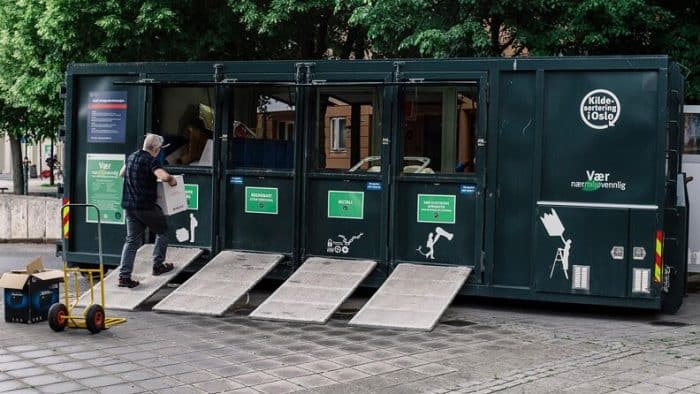
Norway, Iceland and Estonia are leading the way
Norway, Iceland and Estonia all follow the EU’s WEEE Directive and the European Recycling Platform (ERP). Estonia has the highest recycling rate at 76%. Norway recycles 72%, and Iceland 71%. Part of the success in these countries can be attributed to proactive government involvement, including the implementation of strong regulatory frameworks and the allocation of adequate funding to support recycling initiatives. A robust infrastructure drives higher recycling rates by making it easy and accessible for consumers to participate.
The process starts with the involvement of companies that import, manufacture or supply electrical products to European markets. These must meet producer responsibility guidelines for the lifecycle of a product, which includes everything from packaging to recycling at end-of-life. Every store that sells electronic products must also be responsible for the collection and recycling of these items.
Recycling of all items has been a priority in these and other European countries for a long time. In Norway, each town or municipality has drop off points for electronics along with metal, glass, plastics, clothing, porcelain, batteries, paint, and other items. Private citizens can drop off these items at no cost. Larger items such as refrigerators and air conditioners can be taken to district centers.
While the recycling rates are impressive, there is still much work to be done. Because of the sheer amount of electronics consumed, we need stronger efforts towards repair and prolonging life to build a truly circular economy, along with enforcement to avoid illegal trading and dumping of e-waste.
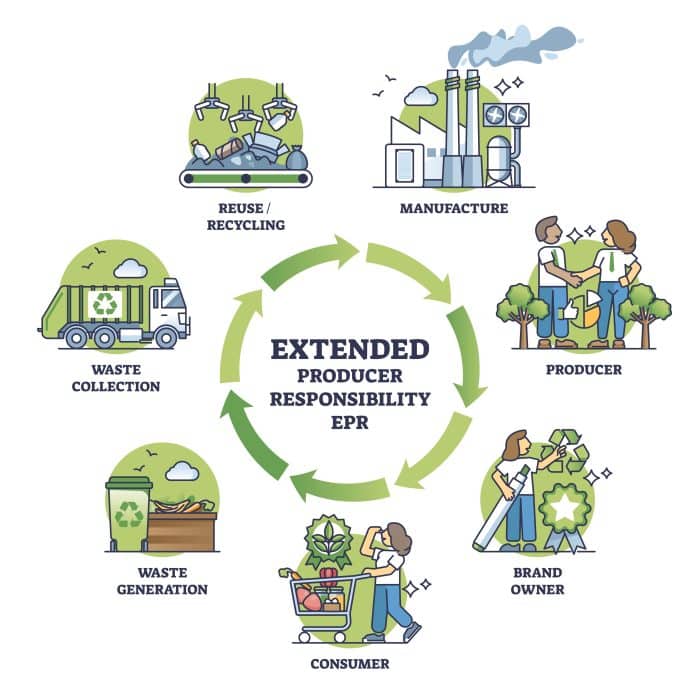
Corporate responsibility
Companies who manufacture and sell electronics have a responsibility to design products that are more sustainable, to minimize waste and reduce pollution, taking ownership of the full lifecycle of their products.
It isn’t right that companies are allowed to extract Earth’s resources, abstain from participating in recycling initiatives, and reap substantial profits without any impact on their financial performance. We must rethink how we define value and long term success, and build more sustainable and responsible ways of doing business. Integrating environmental impact costs into profit assessments is a matter of ethical responsibility.
Devices should be designed with recycling in mind, and without the use of toxic materials like lead, mercury, and cadmium, opting for safer alternatives. Electronics can be designed to be more durable, repairable, and upgradeable. Designs that allow easy replacement of components can help extend the lifespan.
Properly recycling electronic devices is not only environmentally responsible but also cost-effective for companies, as it allows valuable materials like gold, silver, and rare earth elements to be recovered and reused—reducing the need for costly raw material extraction.

What can we do? A call to action
So, what can we do as individuals to tackle the e-waste crisis? As consumers of electronic devices, there are steps we can take to do our part:
- Be mindful of our consumption: We can think twice before upgrading our devices. If it’s still working, why replace it?
- Buy refurbished: Instead of buying new, consider buying refurbished to prolong the lifespan of devices.
- Repair devices: Rather than immediately replacing broken gadgets, consider repairing them. Many electronics can be fixed, reducing the need to dispose of them prematurely.
- Support repair-friendly products: When purchasing new electronics, consider whether the device is designed for repairability. Look for brands that embrace the right to repair.
- Get educated: Find out what recycling programs are available in your area, and what items they will take. You might need to do some research.
- Recycle properly: Don’t just throw your old electronics in the trash. Use certified e-waste recycling programs, which are available in many areas. Many manufacturers offer take-back programs, too.
- Advocate for stronger regulations: Support policies that require manufacturers to take responsibility for the entire lifecycle of their products, including disposal and recycling.
Top electronics to recycle
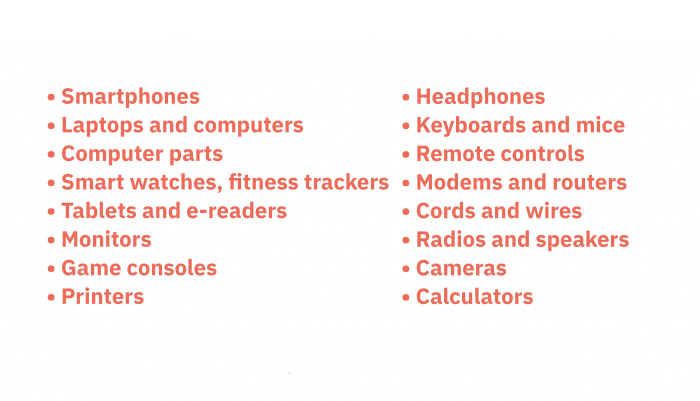
If your town or municipality lacks drop off points, some tech companies such as Apple and Google have their own recycling programs. In the U.S. and Canada, you can drop off electronics at some electronics stores, for example Best Buy and Staples. TerraCycle and Upcycle provide options for corporate pickups and personal mail-in recycling.
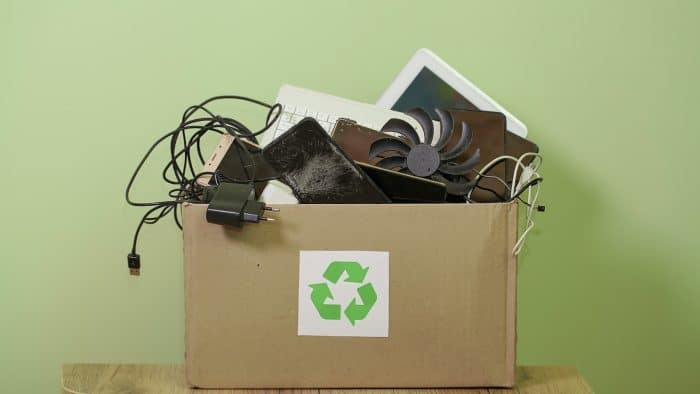
What Runbox is doing
At Runbox, we believe that even small impacts matter, as the cumulative effect of individual actions can lead to significant environmental outcomes—”many a little makes a mickle.”
We are committed to doing our part as consumers of technology and electronic products. Aside from running our servers on 100% renewable energy and aiming to reducing our resource consumption, we also participate in Norway’s efforts towards a circular economy. This means that we reuse or donate obsolete servers, recycle and dispose of our hardware and electronic devices via proper channels, and recycle components that can’t be repurposed.
As part of our broader sustainability efforts, we strive to reduce our dependence on single-use technology products. We encourage opting for products designed to last longer and invest in more sustainable alternatives. Our team is committed to reducing electronic waste by keeping our devices in use longer, supporting the right to repair, choosing refurbished electronics whenever we can, and recycling responsibly. Read more about our efforts here: Sustainable Services and Environmental Policy.
In summary
We need better regulations and recycling infrastructure the world over when it comes to electronics recycling, and consumer societies need to take more responsibility for what happens to their outdated and discarded electronics. Developing nations bear the brunt of all e-waste, and it is having devastating effects not only on their regions but the entire planet.
Regions like the European Union and Norway are leading the way with comprehensive recycling programs, but it’s essential to do much more to ensure responsible recycling, curb illegal exports, and tackle the root causes of e-waste, such as planned obsolescence.
